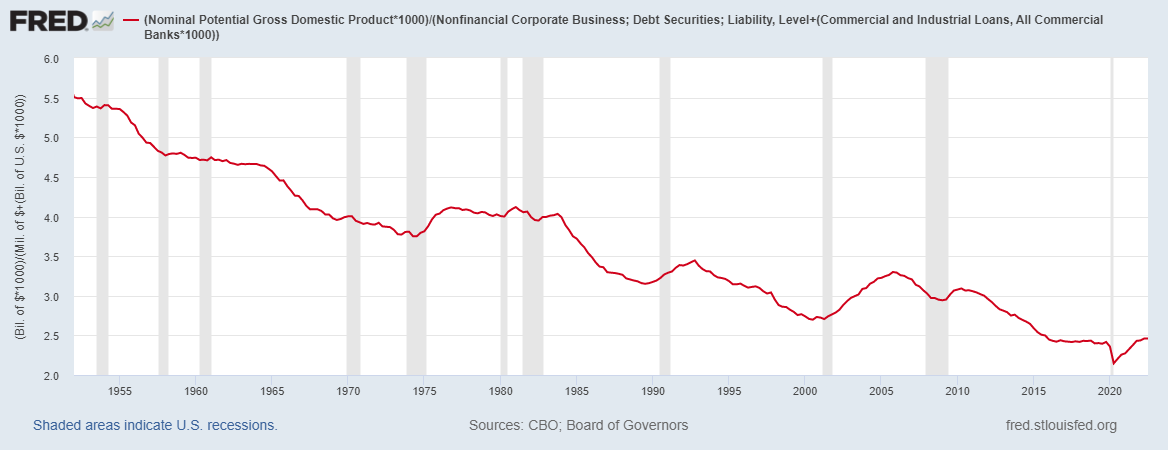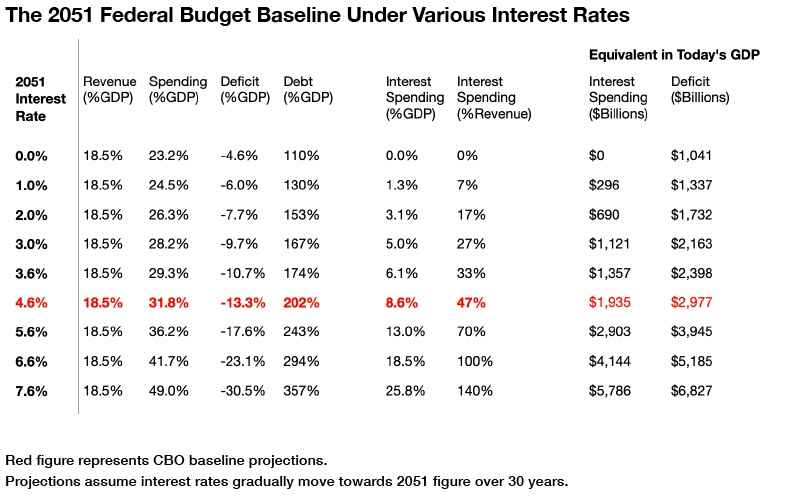Understanding the Ramifications of America's National Debt: The Significance of the Marginal Revenue Product of Debt
Navigating the Challenges and Solutions in Financing Programs and Services for a Stable Economy
It is crucial to comprehend the consequences of this problem and what can be done to address it because the national debt of the United States of America has recently become a source of increasing concern. The marginal revenue product of debt is an important idea that can help us comprehend how debt affects the economy. We'll look at the issue of American debt as well as the function that debt's marginal revenue product plays in comprehending it.
The national debt of the United States, which is currently above $31 trillion, is a serious issue for a number of reasons. The government is burdened by the debt because it must set aside a sizeable amount of its budget to pay the interest on its debt obligations. Less money is available for spending on vital initiatives and services that are necessary for the growth and competitiveness of the nation, such as healthcare, infrastructure, and education. The debt could eventually result in higher inflation, slower economic development, and a larger danger of default if it keeps increasing at its current rate.
The additional revenue produced by each additional unit of debt utilized for financing is referred to as the marginal revenue product of debt. In other words, it calculates the revenue growth brought on by a rise in debt financing. By evaluating the connection between the increased debt used and the consequent increase in revenue, this notion can assist us in understanding the effects of debt on the economy.
If the marginal revenue product of debt is positive, it indicates that the extra revenue brought in by the additional debt financing exceeds the expense of debt servicing. In the near term, this can be advantageous since it gives the government the money it needs to fund crucial services and initiatives. The cost of repaying the debt is larger than the additional revenue produced, which could result in a deterioration in economic growth and stability, if the marginal revenue product of debt is negative.

The graph displays the GDP to non-financial corporate debt ratio. Although GDP is not the best measure for this purpose, this is used to show how debt buildup and economic production are related. Due to the fact that consumer debt and government debt are not viewed as "productive," the graphic concentrates on non-financial company debt. The long-term trajectory of "debt productivity" can be presented legitimately by comparing corporate debt to GDP.

America has become trapped in a debt cycle as a result of rising interest rates. Accordingly, it will become more expensive to borrow money as interest rates rise, making it more difficult for both individuals and corporations to pay off their loans.
One of the main reasons for this debt trap is the increasing national debt. The United States government has been running a deficit for many years, and as a result, has been borrowing more and more money. As interest rates rise, the cost of servicing this debt also increases, making it harder for the government to balance its budget.
To understand the impact of rising interest rates on a country's economy, it is important to examine the relationship between interest rates and inflation. Inflation is the rate at which the general level of prices for goods and services is rising. When inflation is high, central banks, such as the Federal Reserve, will raise interest rates in order to curb it. However, this can lead to a decrease in economic growth, as it becomes more expensive for businesses and individuals to borrow money.

In the short term, higher interest rates can lead to a decrease in consumer spending, as individuals will have to pay more in interest on their credit card and loan debt. This can lead to a decrease in economic growth, as consumer spending is one of the main drivers of the economy. Additionally, higher interest rates can lead to a decrease in housing prices, as it becomes more expensive for individuals to take out mortgages.
In the long term, however, higher interest rates can lead to a decrease in inflation, as it becomes more expensive for businesses to borrow money. This can lead to a decrease in wages, as businesses will not be able to afford to pay as much to their employees. Additionally, higher interest rates can lead to a decrease in government spending, as it becomes more expensive for the government to borrow money.
While rising interest rates can be beneficial in the long term, they can also lead to a debt trap. This is when individuals and businesses are unable to pay off their debts, leading to a decrease in economic growth and an increase in defaults.

In the late 1970s and early 1980s, the United Kingdom was facing high inflation which prompted the Bank of England to raise interest rates to curb it. The increase in interest rates led to a sharp increase in the cost of borrowing, causing many businesses and individuals to struggle with repaying their loans. The resulting loan defaults created a domino effect, leading to a decline in consumer spending and a slowdown in economic activity. This eventually resulted in a recession in the country, with a significant drop in GDP, high unemployment, and a large budget deficit.
The UK government, facing a dire economic situation, had to seek a bailout from the International Monetary Fund (IMF) in 1976. The IMF provided a loan package, but it came with strict conditions, including austerity measures, which meant reducing government spending and cutting back on social programs. These measures were aimed at reducing the country's budget deficit and stabilizing the economy, but they also had a profound impact on the people of the UK, who faced significant cuts to essential services.
The UK's example shows how a nation can become trapped in debt as a result of rising interest rates. The UK's experience serves as a reminder that countries should approach interest rate adjustments with caution and moderation because they can have significant effects on the economy, businesses, and people. The experience also serves as a reminder of the value of a sound financial system and the necessity for nations to have a plan in place to cope with economic downturns, in order to lessen their effects and prevent themselves from getting caught in a debt trap.
Japan's experience in the 1990s serves as a cautionary tale for policymakers around the world. During the period, Japan's economy was characterized by an asset bubble, with high inflation and soaring property prices. To combat inflation, the Bank of Japan raised interest rates, which led to a sharp increase in the cost of borrowing. The rise in borrowing costs had a significant impact on economic growth, as businesses and consumers found it increasingly difficult to obtain credit.
As a result of the high cost of borrowing and the slowdown in economic growth, Japan was faced with a period of deflation, where prices declined and spending contracted. This created a vicious cycle of lower spending, declining prices, and reduced economic growth, which took more than a decade for Japan to overcome. The country's economy struggled to recover, and it was only after a decade of low interest rates, fiscal stimulus, and monetary easing that Japan was able to emerge from its debt trap.
This experience emphasizes the significance of sound fiscal and monetary policy as well as the necessity for decision-makers to take the long view. It may have been necessary for the Bank of Japan to increase interest rates in Japan to control inflation, but doing so had unforeseen implications that took years to resolve. This serves as a reminder of how crucial it is to take into account how monetary and fiscal policy interact with one another as well as the necessity of a coordinated strategy to controlling the economy.

It is significant to remember that the US economy and interest rate environment differ from those of the UK and Japan. To prevent slipping into the same trap, it is crucial to take lessons from previous nations' mistakes.
America's national debt presents a significant problem that requires attention and action. Understanding the marginal revenue product of debt can help comprehend the impact of debt on the economy and provide insights into how the government can make informed decisions regarding financing its programs and services. While there are no straightforward solutions to this complex issue, it is vital for policymakers to consider the long-term implications of their decisions and work towards reducing the national debt in a sustainable and responsible manner.

The Lunar New Year has come to an end and it was a much-needed break for many. Despite the festivities and rest, it's time to get back to work and tackle the daily grind once again. The holidays allowed for some time to recharge, spend time with loved ones, and make memories that will last a lifetime. But now, it's time to refocus and put our energy back into our responsibilities and goals. Winter can be long and dreary, and I can't wait for it to be over. The warmer weather, brighter days, and longer evenings are calling my name. Let's embrace the new season and all the opportunities it brings. Let's get back to it, full steam ahead!

The information contained in Amarii Holdings' website and newsletters is obtained from sources believed to be reliable, but its accuracy cannot be guaranteed. This information is not intended to constitute individual investment advice or to be tailored to your personal financial situation. The views and opinions expressed in these publications are those of the publisher and editors and are subject to change without notice. The information may become outdated and there is no obligation to update it. Any use of this information is at your own risk and Amarii Holdings accepts no liability for any loss or damage resulting from your reliance on it. You should consult with your financial advisers before making any investment decisions to determine if a particular investment is suitable for your needs.
